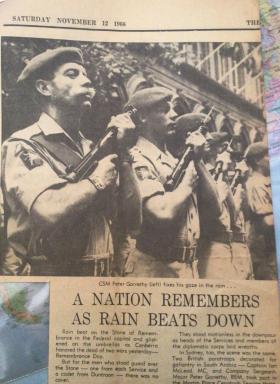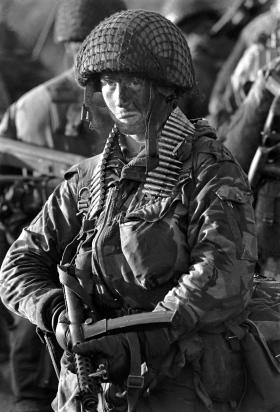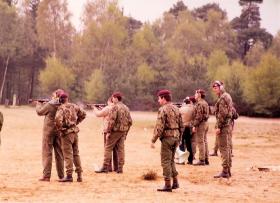The Sterling submachine gun (SMG) was used for many years by The Parachute Regiment and Airborne Forces as a replacement for the wartime STEN SMG.
Designed between 1942 and 1944, by George Patchett, chief designer of Sterling Armaments, a small number were produced in 1944 and became known as the Patchett. Reports from trials were positive and in 1947 the design was submitted for trials to replace the STEN, alongside competing designs from BSA, Enfield and Australia.
None of the competitors were successful and further modifications were made to the designs before a retrial in 1951. This was won by the Patchett and it was accepted into service in 1953 as SMG L2A1, or more commonly “Sterling”.
Of conventional design, with a side mounted curved magazine, the Sterling was similar in appearance to the STEN. The Sterling used a blowback mechanism and also had a ribbed bolt which helped prevent fouling and dirt accumulation. The stock could also be folded under the weapon. The weapon recieved a number of minor modifications in service including to the foresight and a later silenced version was developed.
Widely used by Airborne Forces, it saw service in various campaigns around the world and was adopted for use by 90 countries.
The Sterling was withdrawn from service in the British Army during the early 1990s.
Statistics
Weight 2.7kg (empty)
Length 686mm (481mm folded stock)
Calibre 9mm
Rate of fire 550 round/min
Effective range 200 metres
















Latest Comments
There is no known figure, but research has the figure at approximately 96. The South Staffs was one such Regiment. The Patchett could take the straight magazine of the STEN.
Add Comment
In order to add comments you must be registered with ParaData.
If you are currently a ParaData member please login.
If you are not currently a ParaData member but wish to get involved please register.